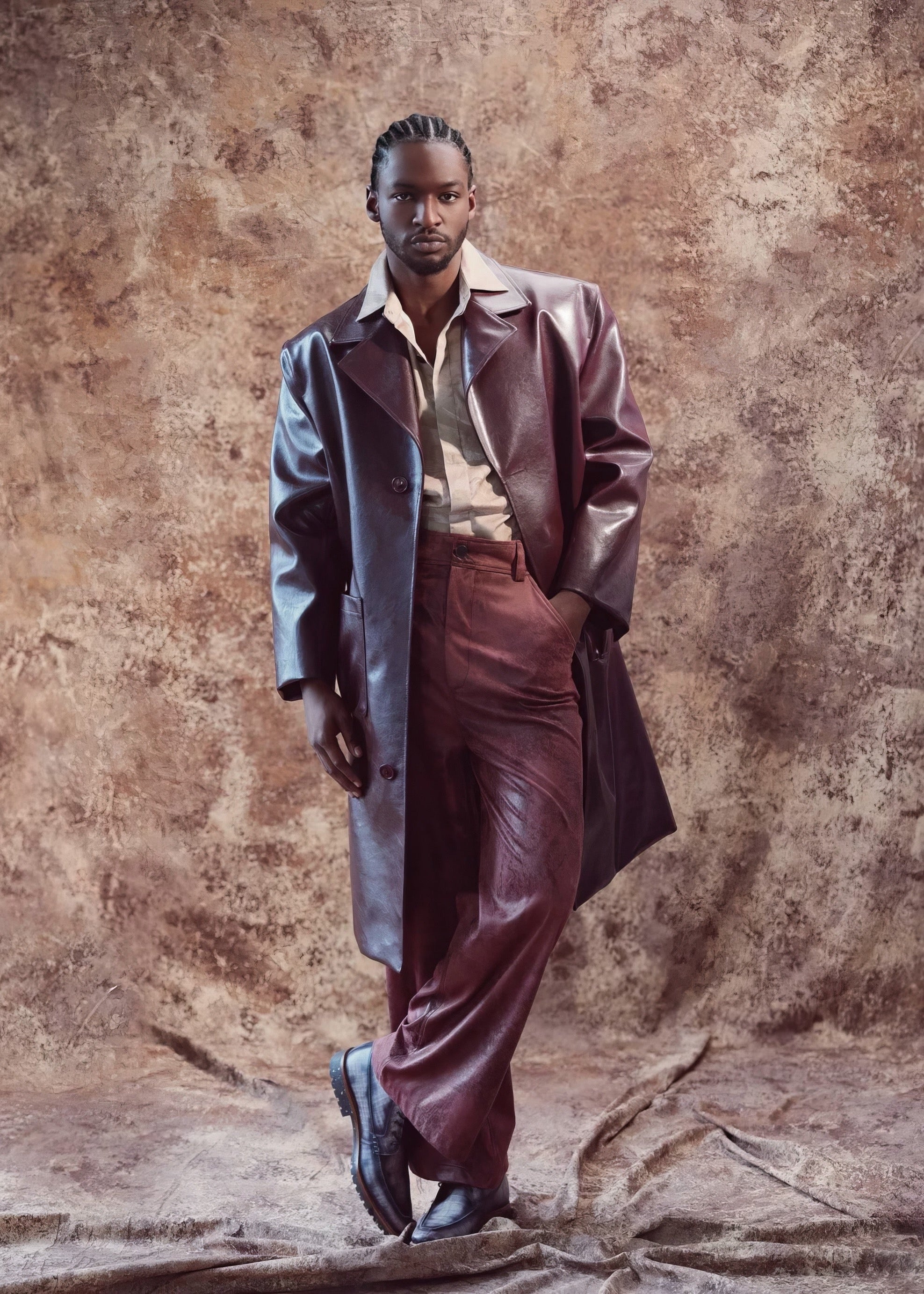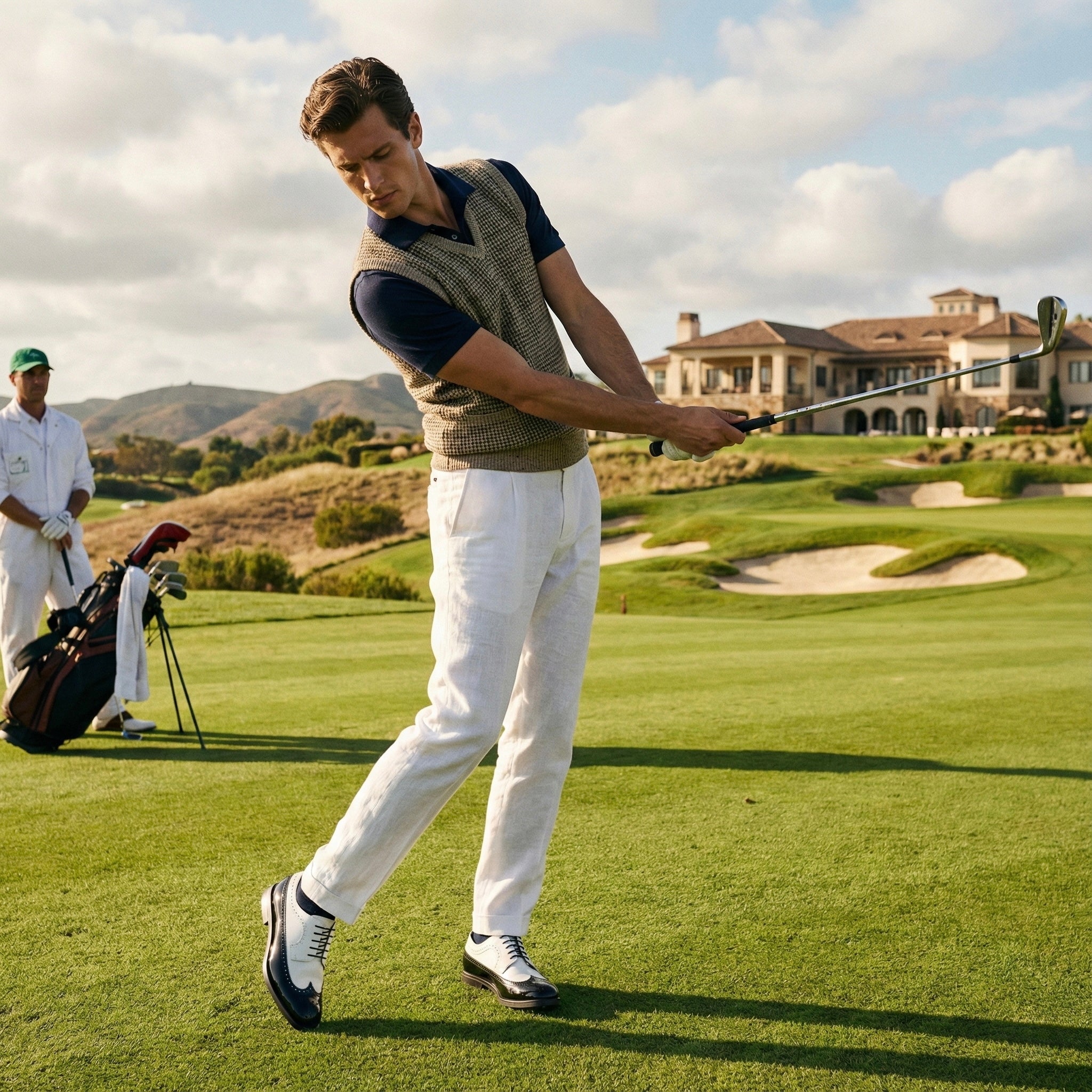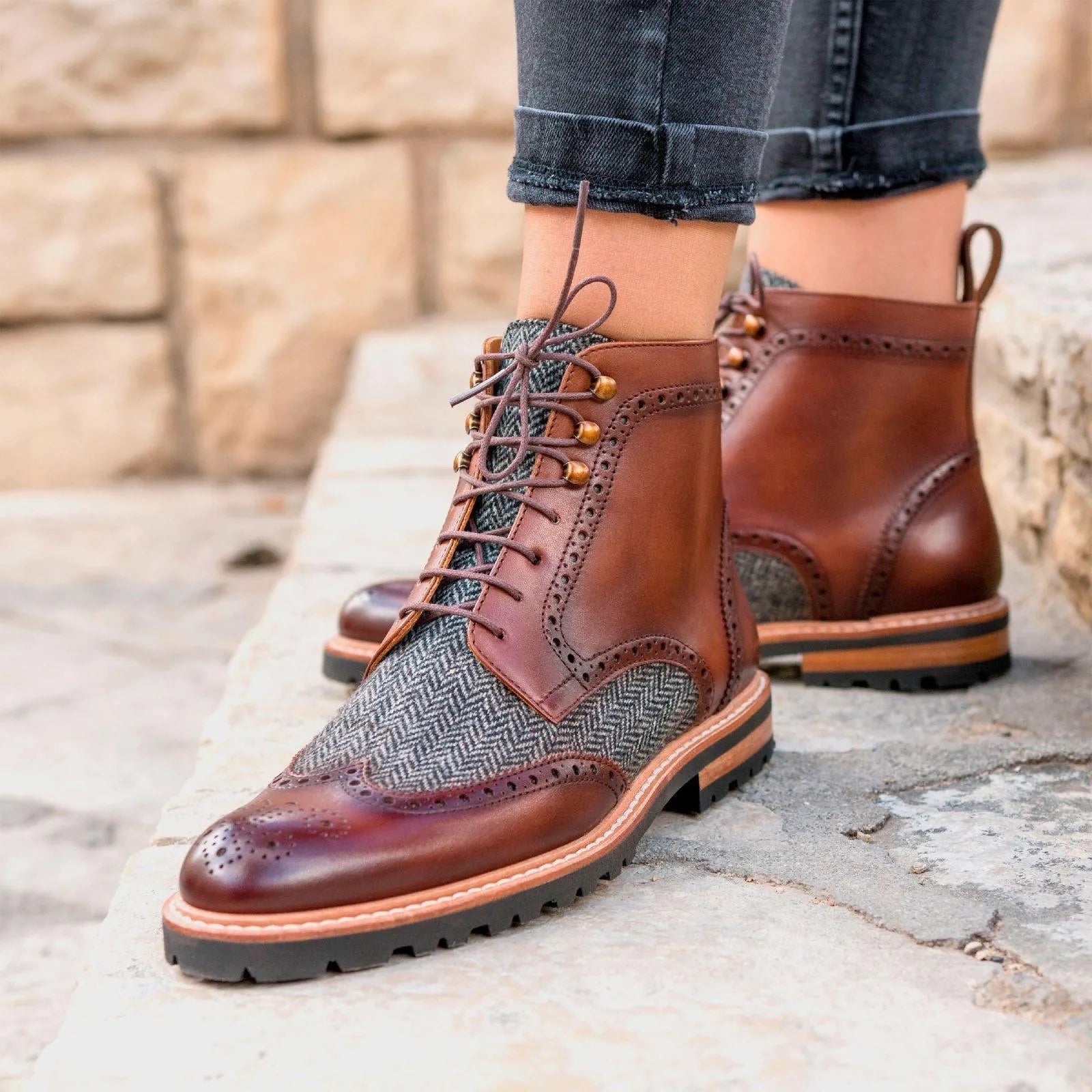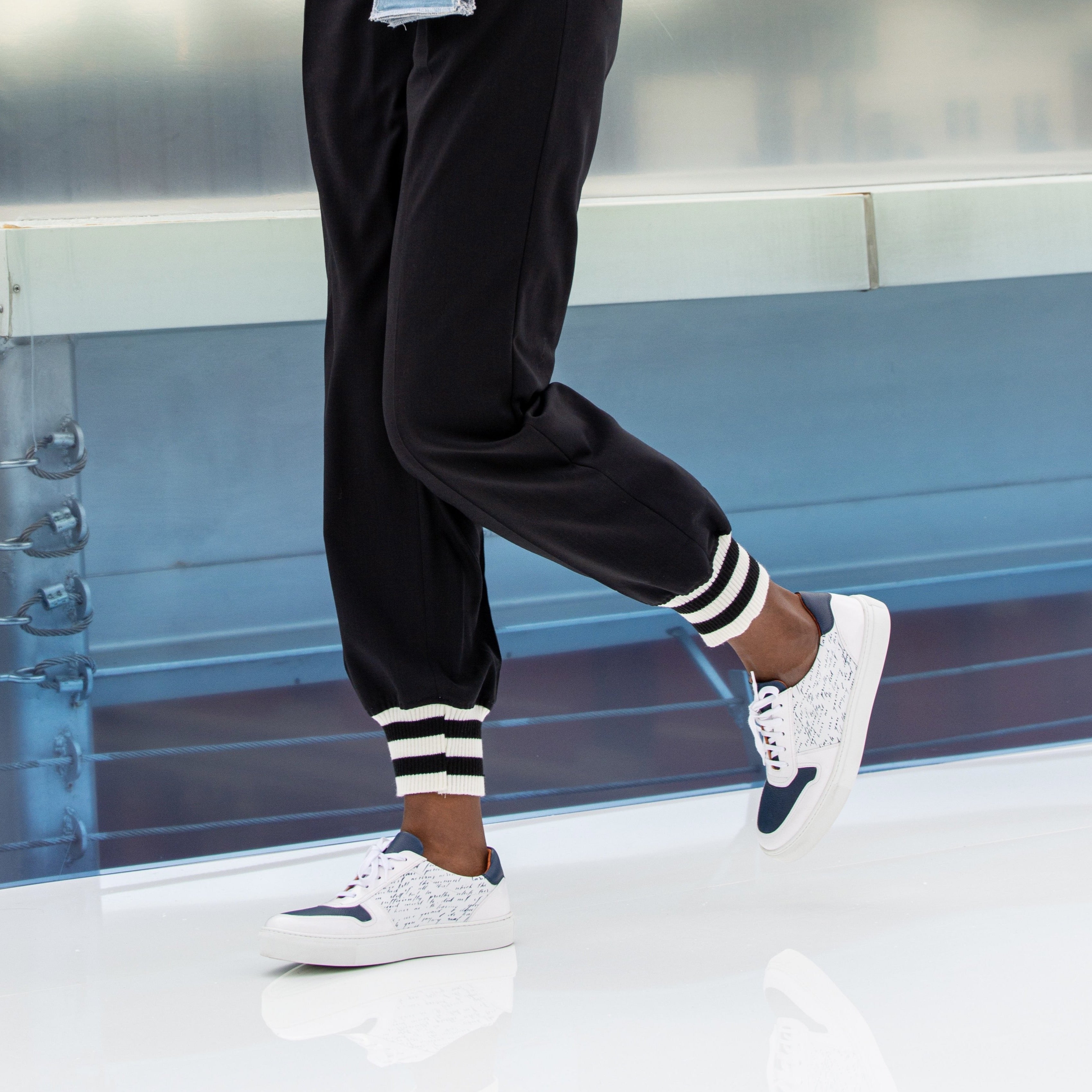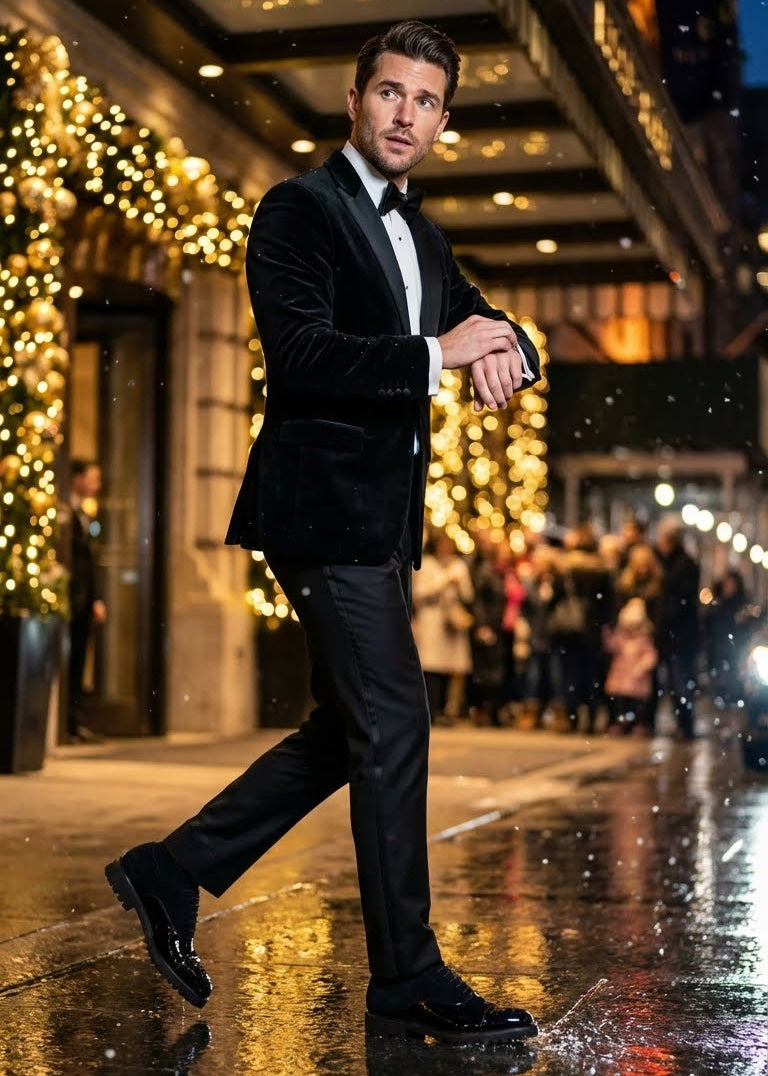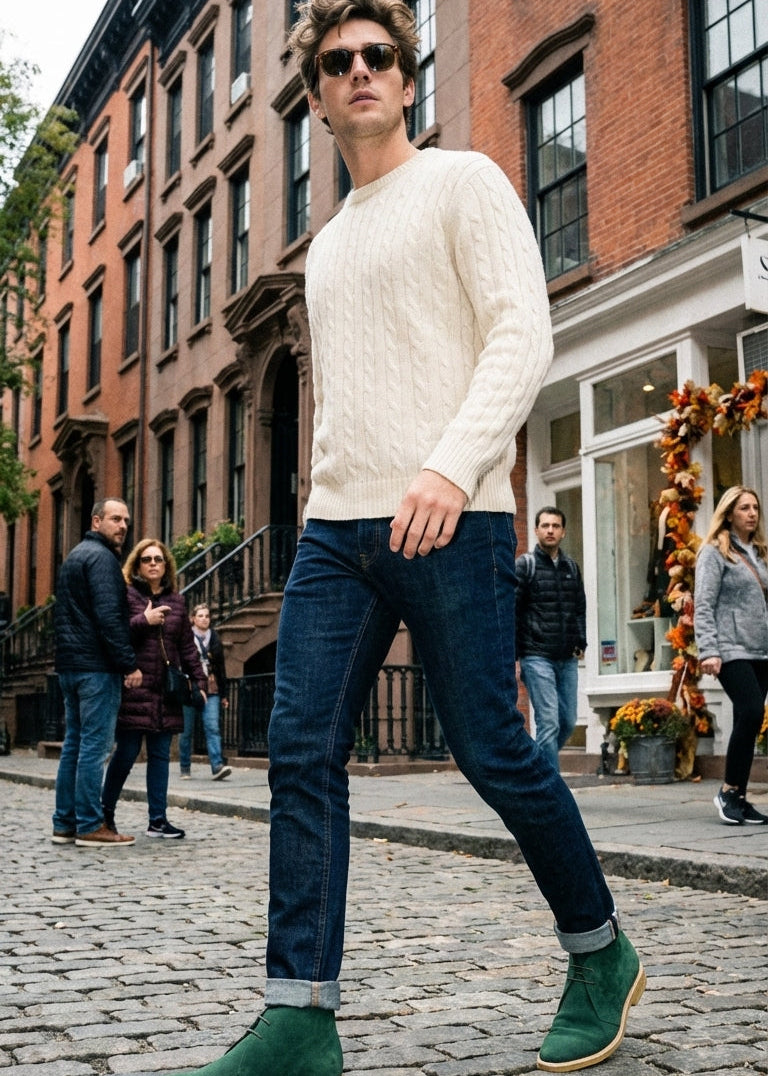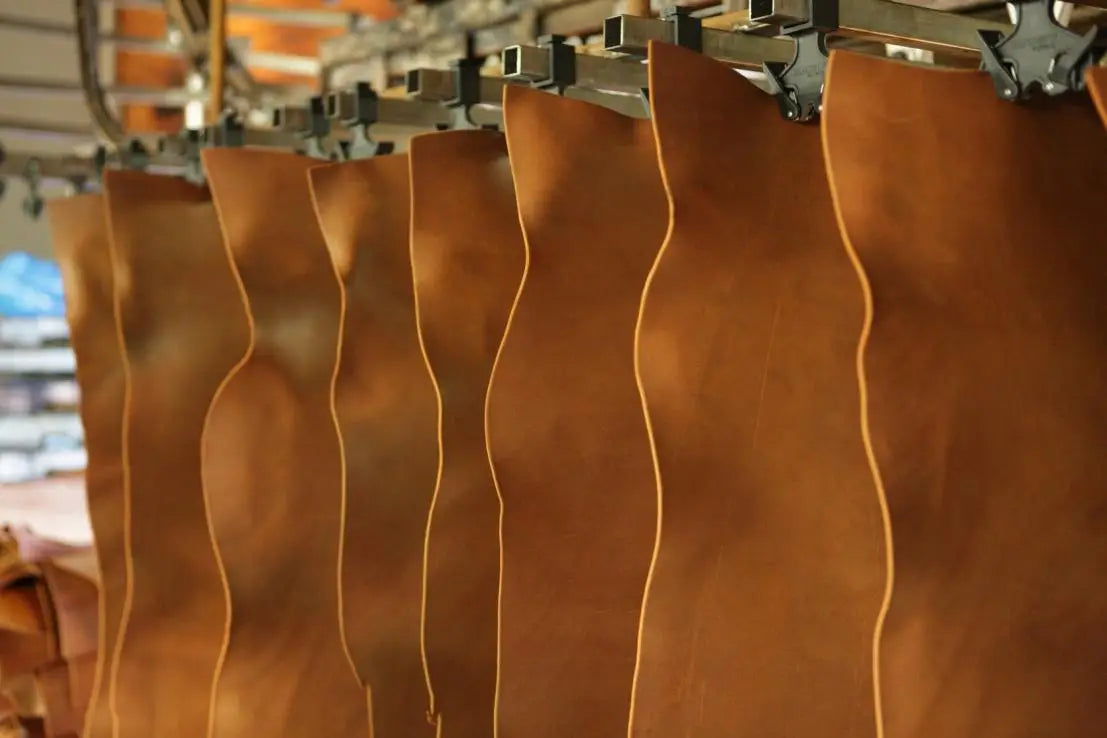The Craft
“Nous avons recherché les meilleurs matériaux au monde et les artisans du cuir pour les associer à nos créations afin de vous offrir une expérience de mode aristocratique comme jamais vue auparavant”
Cuirs & Tissus
Nos Matières Premières
Le cuir est la pierre angulaire de chaque chaussure pour homme de qualité, nécessitant une compétence étendue dans sa production. En général, les chaussures de meilleure qualité présentent un cuir plus travaillé, augmentant ainsi leur coût. Environ 47 pour cent des coûts de fabrication des chaussures sur mesure de luxe pour hommes peuvent être attribués à ce matériau premium.
Nos taneries de veau sont situées dans le Nord-Ouest de l'Espagne, en Allemagne et en Italie.
Les types de cuir énumérés ci-dessous comprennent une sélection variée de peaux utilisées dans la création de chaussures sur mesure de luxe pour hommes, chacune se distinguant par des esthétiques et des textures uniques.
Cuir de Veau Peint
Provenant d'Italie, le cuir de veau en croûte permet aux artisans de peindre délicatement à la main en utilisant des crèmes et des pinceaux spécifiques, lui conférant un aspect artistique. Ce même matériau utilisé par de grandes marques de luxe telles que Santoni et Berluti est méticuleusement peint à la main par des artisans qualifiés.
En plus du cuir de veau peint « ordinaire », nous proposons des versions avec diverses textures telles que le cuir pleine fleur et le cuir grainé.
Cuir de Veau Boîte
Apprécié pour sa finesse, sa souplesse et son grain lisse, le cuir de veau boîte est principalement utilisé dans les chaussures de luxe pour hommes. Ces cuirs

